Review: 2013 Nissan Maxima SV

Every generation of Maxima has some fans — I’m partial to the bespoilered black ’87 five-speed my father drove for two years of my childhood — but the reputation of the nameplate is built almost entirely on the brilliant third-gen 1989 Max SE and the 1992 revision of that car that added a BMW-matching 190 horsepower to the already outstanding styling and chassis. After that, it was mostly downhill, with the porky, anonymous-looking sixth-generation ’04 probably representing the nameplate’s depressing nadir.
The current Maxima is anything but anonymous-looking, but it’s failed to make much of an impression and it currently sells at a rate approximately one-fifth that of the Altima that has largely eclipsed it in the marketplace. Many of those sales are to rental companies, and thus I was able to grab a nearly brand-new Maxima SV for a fast drive along the Northern California coast.
As you see it in these pictures, and as Hertz rented it to me, this is a $34,090 car. That gets you a Nissan VQ engine in 290-horse trim and a CVT. It also gets you some nice-smelling and reasonably comfy leather seats. It does not get you a high-end up sound system, heated seats, or the kind of color screen that you get in a $22,000 Camry. It’s only four grand cheaper than an Infiniti G37 that has all of that stuff plus more power, a longitudinal engine, and a dealership full of useless shoji screens. You get the point? There’s no value here, not at the sticker price.
Nor is the interior upscale in any particular fashion. There’s some black-bamboo-looking trim on an undifferentiated cheap black dashboard that probably isn’t quite up to the standards of the 1989 Maxima. It’s sporty after a fashion, but if you’d just bought the thing at full pop you would have a few moments of self-doubt when you sat in it the next morning. I don’t know about you, but I’d feel better looking at that ’89 Maxima for a minute:
I feel better already. Doesn’t that picture make you want to drive? Me too. Luckily, once you get on the move the current version of the not-so-big Nissan starts to redeem itself a bit. The CVT that makes the most of the Altima’s four cylinder allows the VQ to scorch the road at freeway speeds. The test numbers this generation of Maxima generates aren’t any better than what any of the other V-6 Japanese-branded mid-sizers can do, but when you need to bump from 60mph to 80mph to make a pass or resolve some traffic issue the powertrain really makes money.
On the roads out of San Francisco towards Half Moon Bay, the Maxima proves to have power, handling, and brakes to spare. There’s a manual-shift mode but what’s the point in deliberately restricting the CVT’s ability to keep the engine in its torque curve? As with every Maxima since my father’s second-generation car, this one’s fast enough to get ahead of traffic and stay ahead. Of course, the same could be said of the new Altima, which is a considerably more modern and better-equipped choice for less money.
Why would you buy this car? Well, there’s the way it looks, which isn’t bad and is certainly unique in the segment. Most iterations of the Maxima have been good-looking and I’d suggest that this one is as well. It looks like it’s a class up from the mainstream family sedans and it manages to combine some expensive-looking sheetmetal with considerable interior room for both front and rear-seat passengers. NVH isolation is outstanding. If you keep your eyes on the evocative front fenders and off the dashboard, it feels like a credible, sportier competitor to the Lexus ES. There’s nothing cheap or second-rate about the way the Maxima drives.
I put about 450 miles on the silver sedan and I’d have cheerfully put a lot more on it — but then again, I was paying the same rental rate I’d pay for a Camry. Actual cash customers have a more difficult decision on their hands. At the same dealership, they can get what’s arguably a better car for less money in the Altima. Or they can drive over to the Infiniti dealership and get a faster, more capable, more prestigious, and more desirable car for less than ten percent more.
Here’s the problem in a nutshell: Once upon a time, the Maxima was the pinnacle of the Nissan pyramid. It was also the sportiest Japanese sedan money could buy. The Stanza beneath it was a four-cylinder sled without much style or equipment. Fast-forward to 2013, and the Altima squeezes it from below while the G37 (and upcoming Q50) carries the sports/prestige banner. Toyota never faced the same quandary with the Avalon because the Avalon was expressly created to be a Camry for older, slightly more wealthy people. As a result, it does half again the volume the Maxima does, at transaction prices that are probably higher than Nissan gets for its car.
The people at Nissan aren’t stupid. They know that the two-tier FWD sedan approach works best when the big sedan is a long-wheelbase version of the little one. The problem is that the company has already tried that, with the big previous-gen Maxima, and buyers rejected it. I suspect the name was part of that. If they’d called it something besides “Maxima”, nobody would have expected it to be sporty or stylish. For better or worse, the iconic ’89 SE continues to cast a long shadow. When you call a car Maxima, there’s some baggage that gets tossed in the trunk.
It’s not that the 2013 Maxima is unworthy of the name, although it would certainly be nice to have an overtly sporting visual package and a six-speed manual in the order books. Rather, it’s a case of the whole concept being outdated. Nissan’s upscale, sporting customers no longer have any interest in a front-wheel-drive BMW competitor; they can go to Infiniti and get a rear-wheel-drive BMW competitor for similar money. The writing’s been on the wall for the Max ever since the G35 arrived. It’s a pleasant car, it’s not bad to drive, and it’s more interesting-looking than any sedan Toyota’s built in years, but it’s a dead man walking straight from the showroom to the rental fleets. If you decide to buy one, don’t pay any more than the fleets pay, alright?

More by Jack Baruth
Latest Car Reviews
Read moreLatest Product Reviews
Read moreRecent Comments
- TheEndlessEnigma Not only do I not care about the move, I do not care about GM....gm...or whatever it calls itself.
- Redapple2 As stated above, gm now is not the GM of old. They say it themselves without realizing it. New logo: GM > gm. As much as I dislike my benefactor (gm spent ~ $200,000 on my BS and MS) I try to be fair, a smart business makes timely decisions based on the reality of the current (and future estimates) situation. The move is a good one.
- Dave M. After an 19-month wait, I finally got my Lariat hybrid in January. It's everything I expected and more for my $35k. The interior is more than adequate for my needs, and I greatly enjoy all the safety features present, which I didn't have on my "old" car (2013 Outback). It's solidly built, and I'm averaging 45-50 mpgs on my 30 mile daily commute (35-75 mph); I took my first road trip last weekend and averaged 35 mpgs at 75-80 mph. Wishes? Memory seats, ventilated seats, and Homelink. Overall I'm very pleased and impressed. It's my first American branded car in my 45 years of buying new cars. Usually I'm a J-VIN kind of guy....
- Shipwright off topic.I wonder if the truck in the picture has a skid plate to protect the battery because, judging by the scuff mark in the rock immediately behind the truck, it may dented.
- EBFlex This doesn’t bode well for the real Mustang. When you start slapping meaningless sticker packages it usually means it’s not going to be around long.




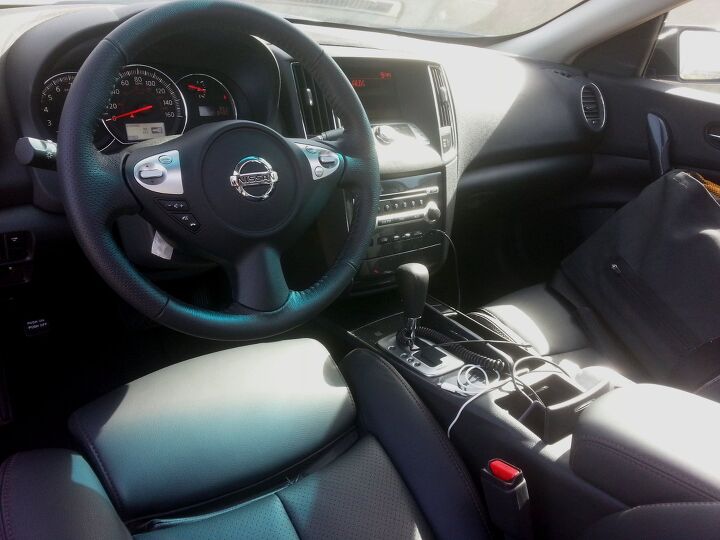


















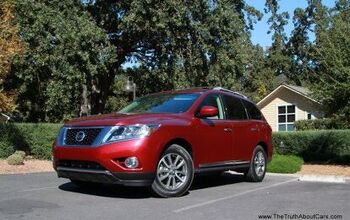
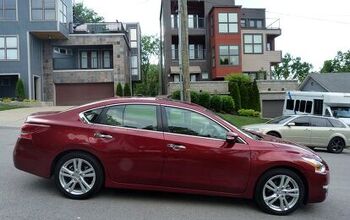
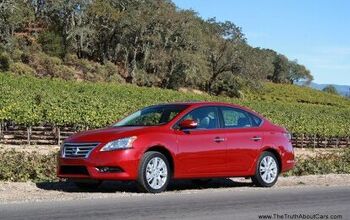
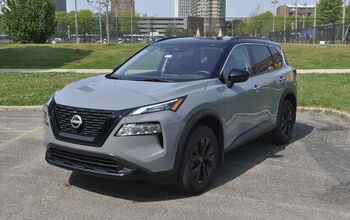
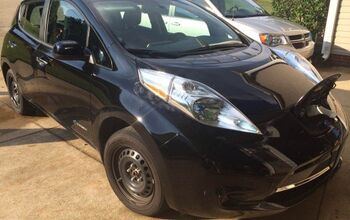






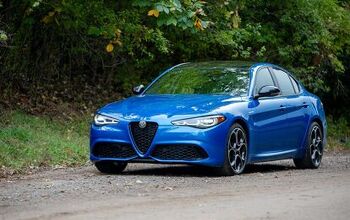



Comments
Join the conversation
Reviewer and couple other posters on here kill me. First, the car in that pic ad is not an 89, 99 maybe, but a 4th gen. Second y'all blow that money on that new junk , I'll drive 3rd gens untill I can't find parts anymore. 89gxe rear ended with 273 someodd thousand miles on it, only problem I ever had was no cup holders. 93se after that .... Retired with over 312000 mi on it due to water pump going bad and my right arm was shattered at the time so I sold it rather than fix it myself . Was about to rust in half but that sucker would run. My only real gripe about it ....... no cup holders. Currently have a 91gxe with 244700 on it NO RUST! My only complaint, sunroof has a fine crack in it but no leaks and I had to fashion my own cupholders in this one. These cars are awesome and if maintained will last years. Only General Motors g body platform can arouse me more than the design of these Maxis. Sadly they are what the Maxima became in 95......... Not produced anymore!
Now is the time to buy folks. I just purchased a 2013 Maxima SV with Sport package for 27,295. It stickered just over 38,000. For the money, I could not find a car to one up it in the V6 family sedan category.